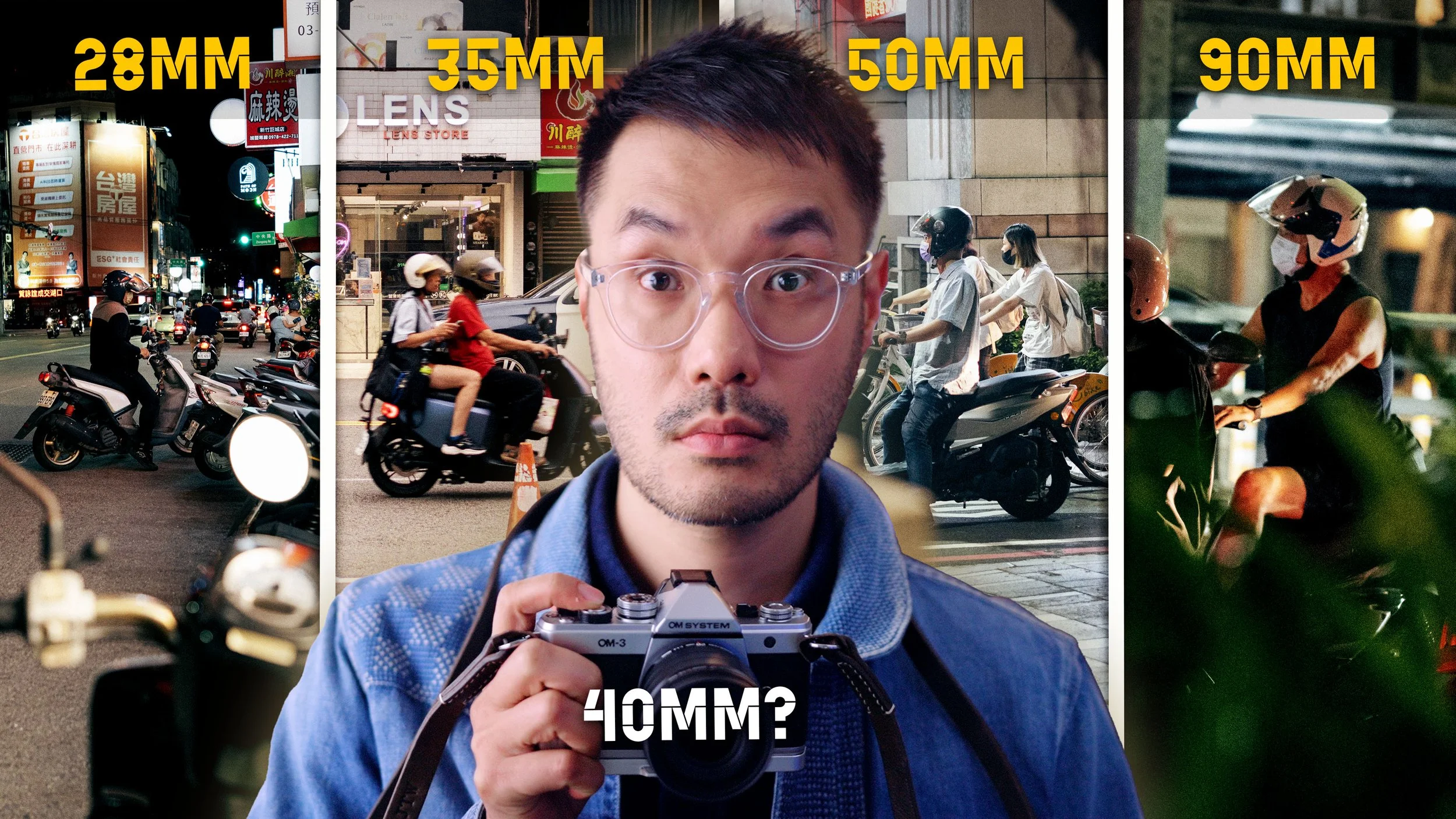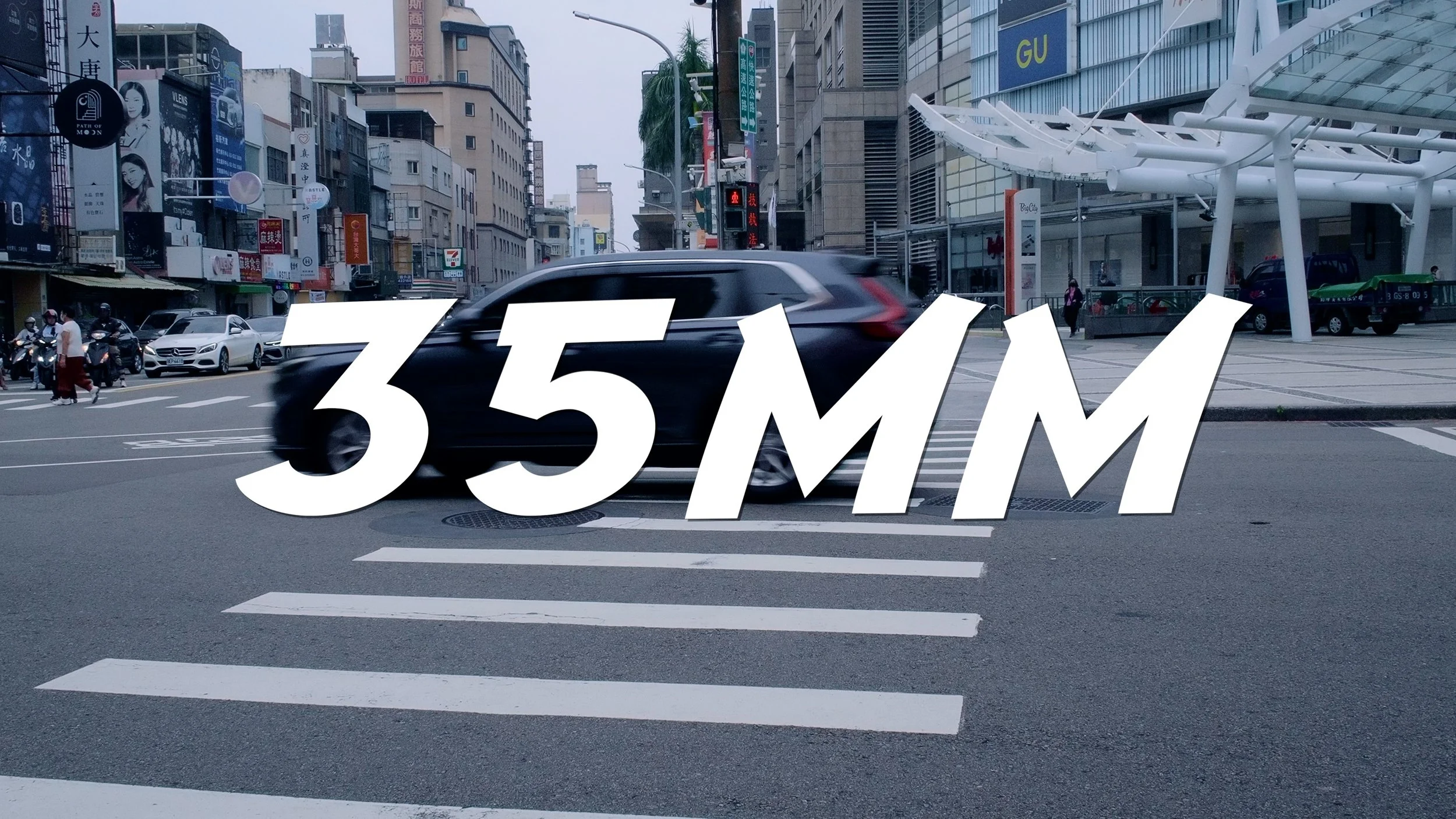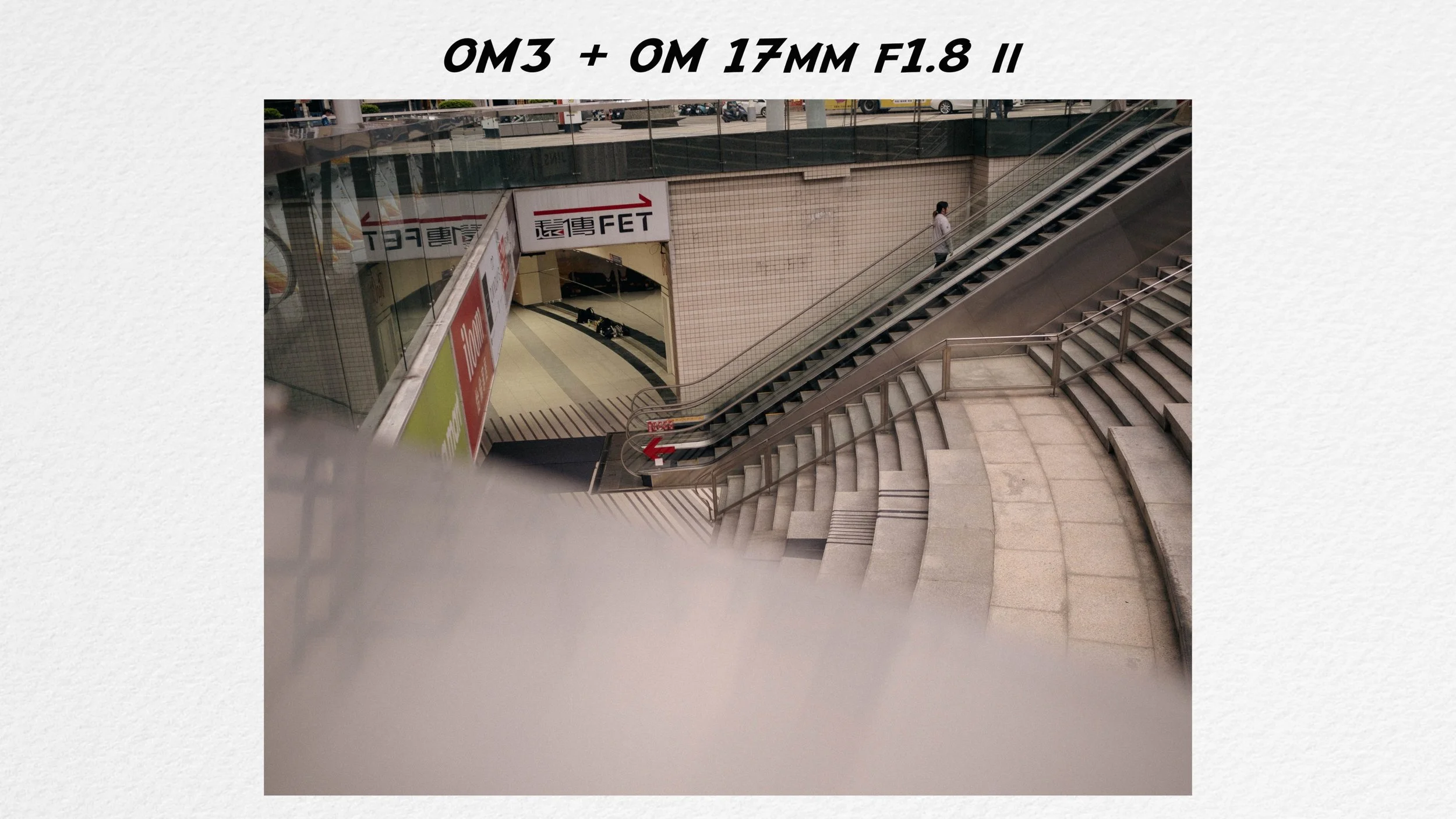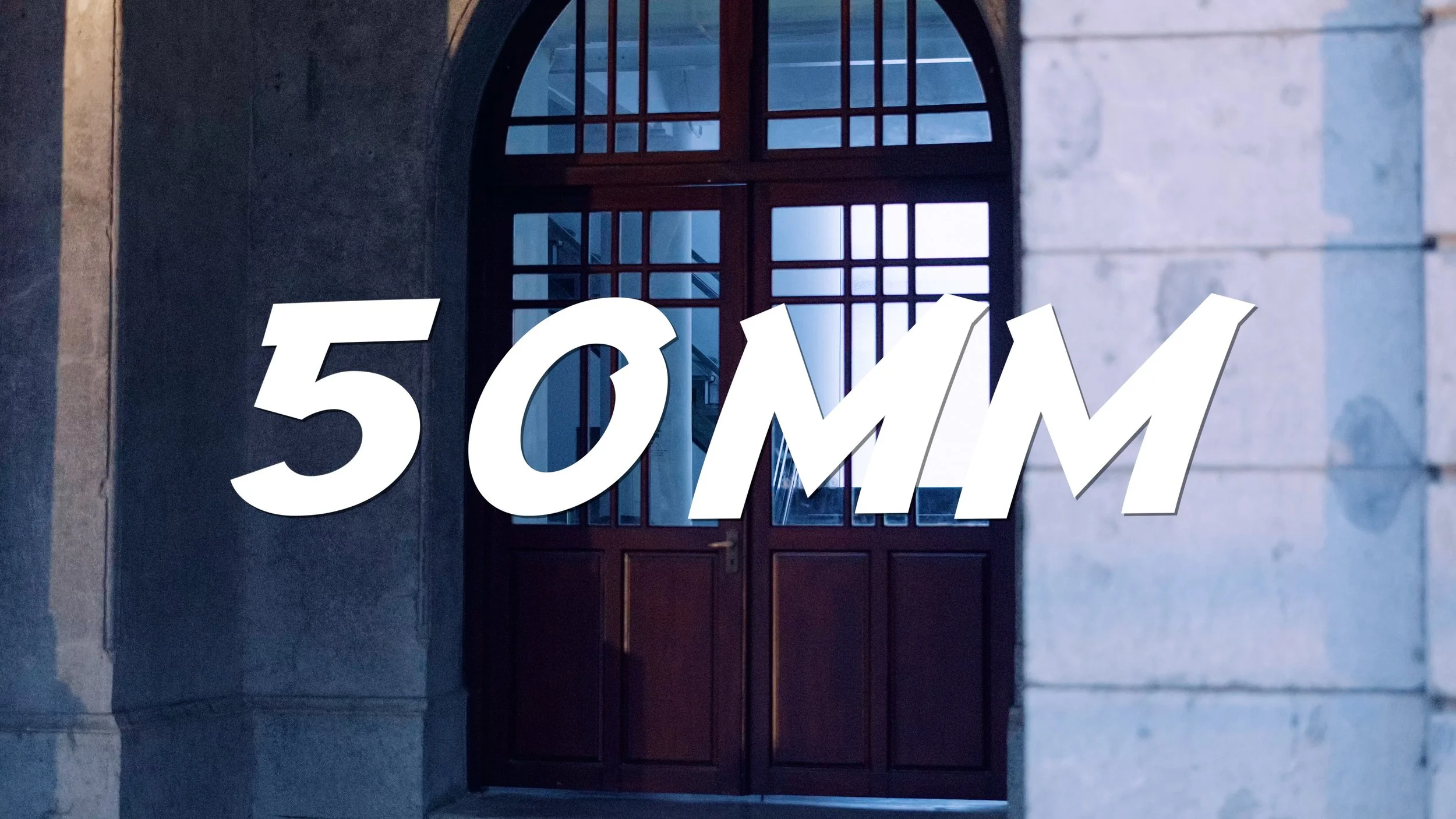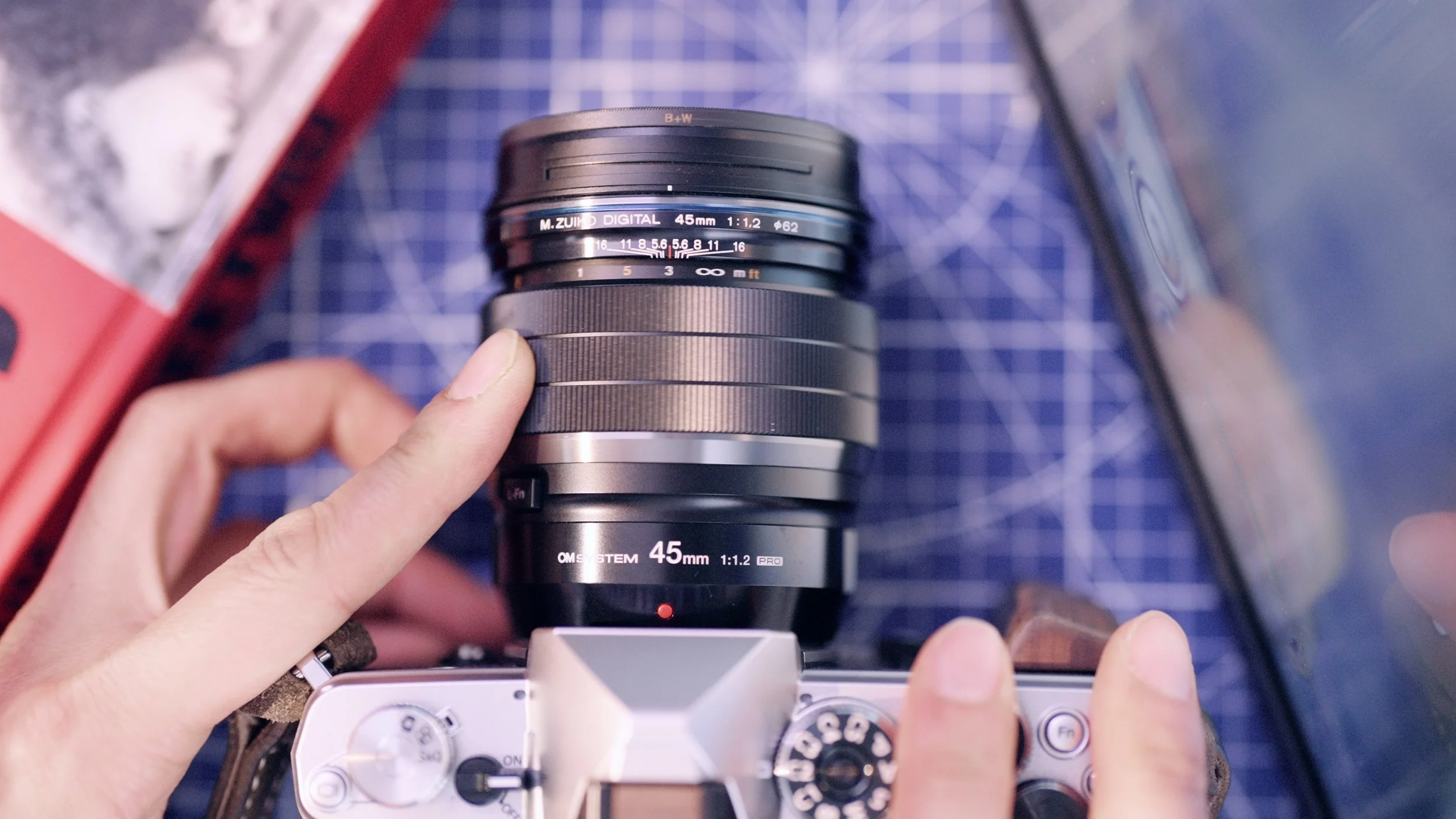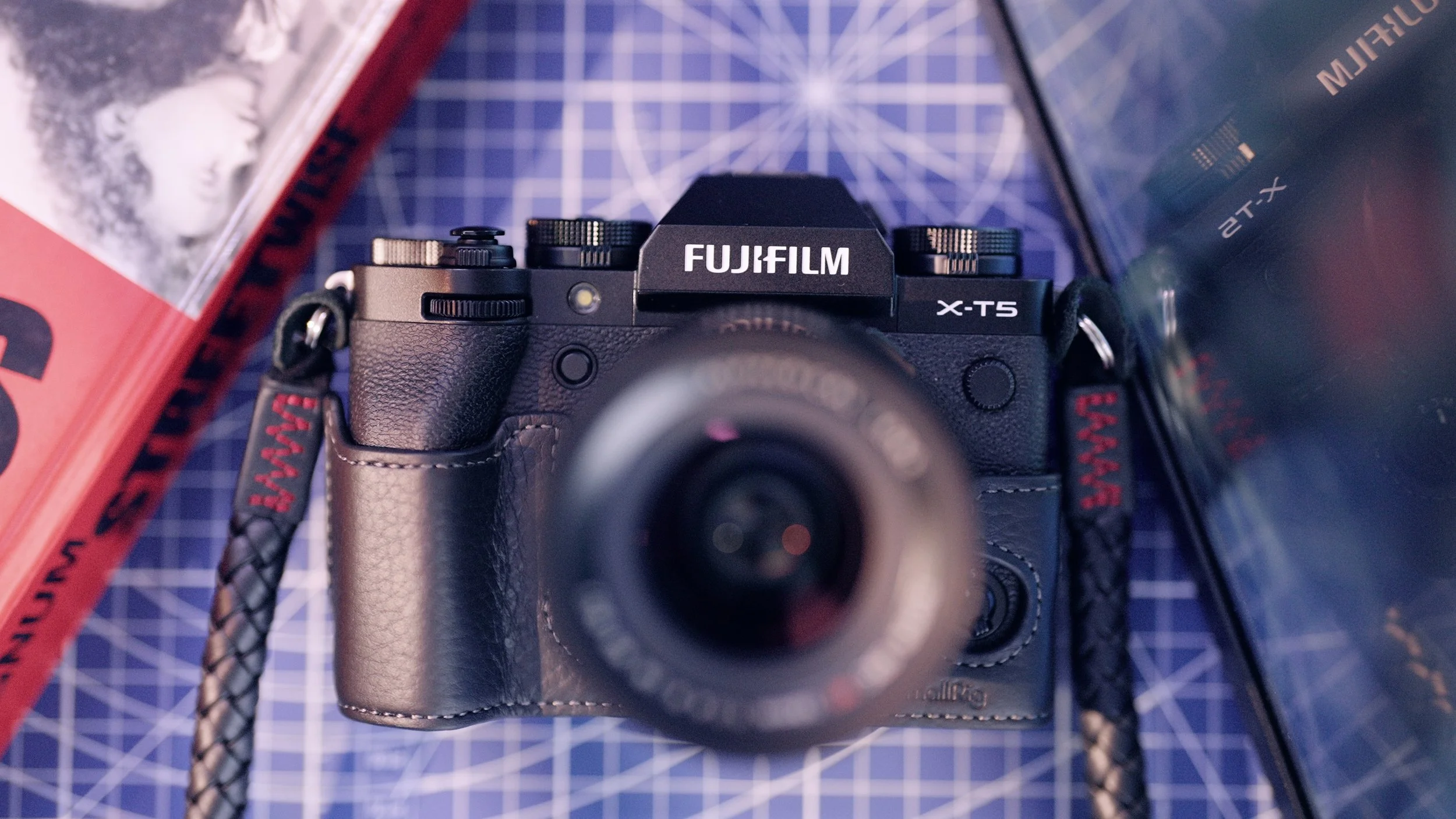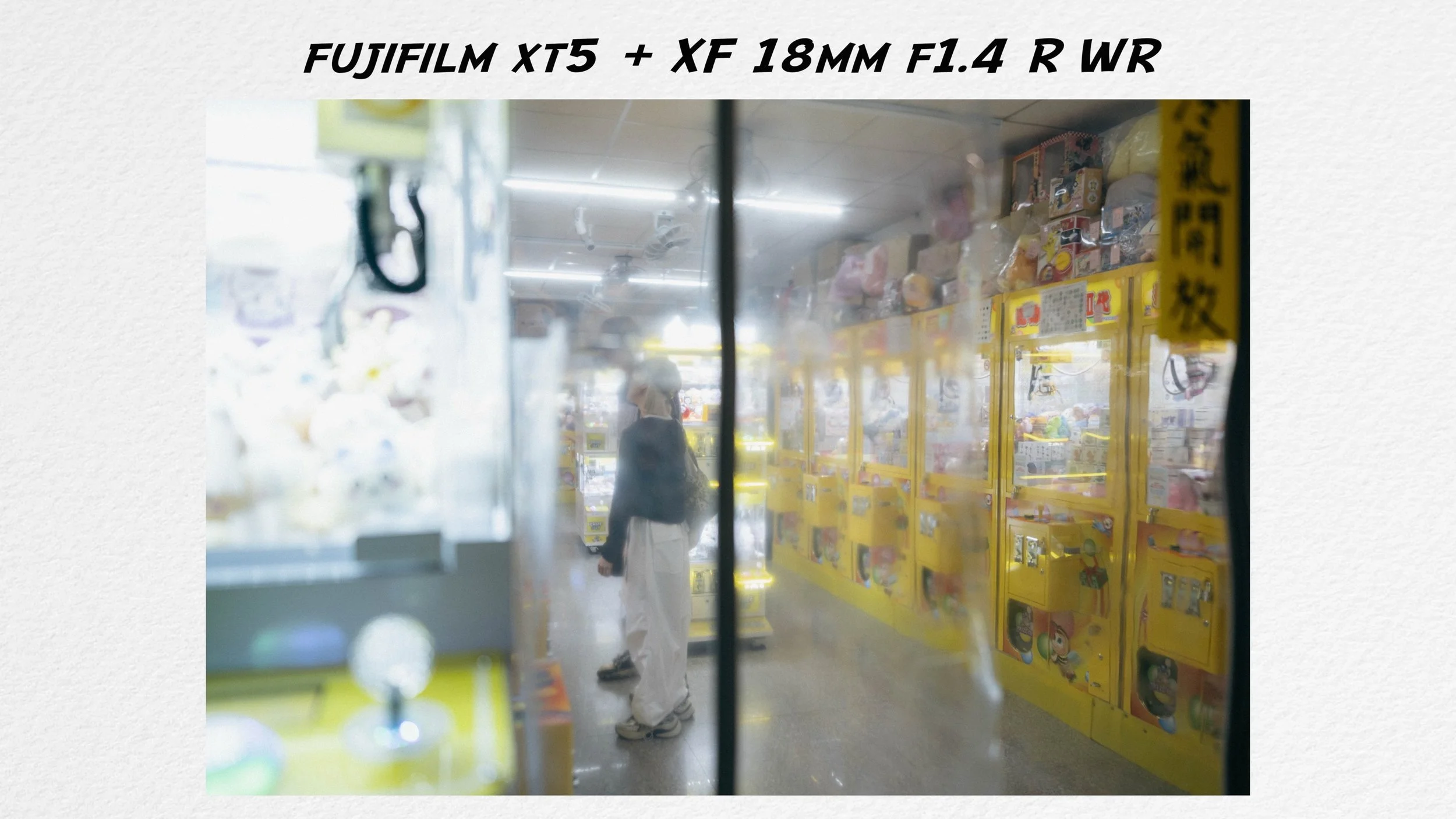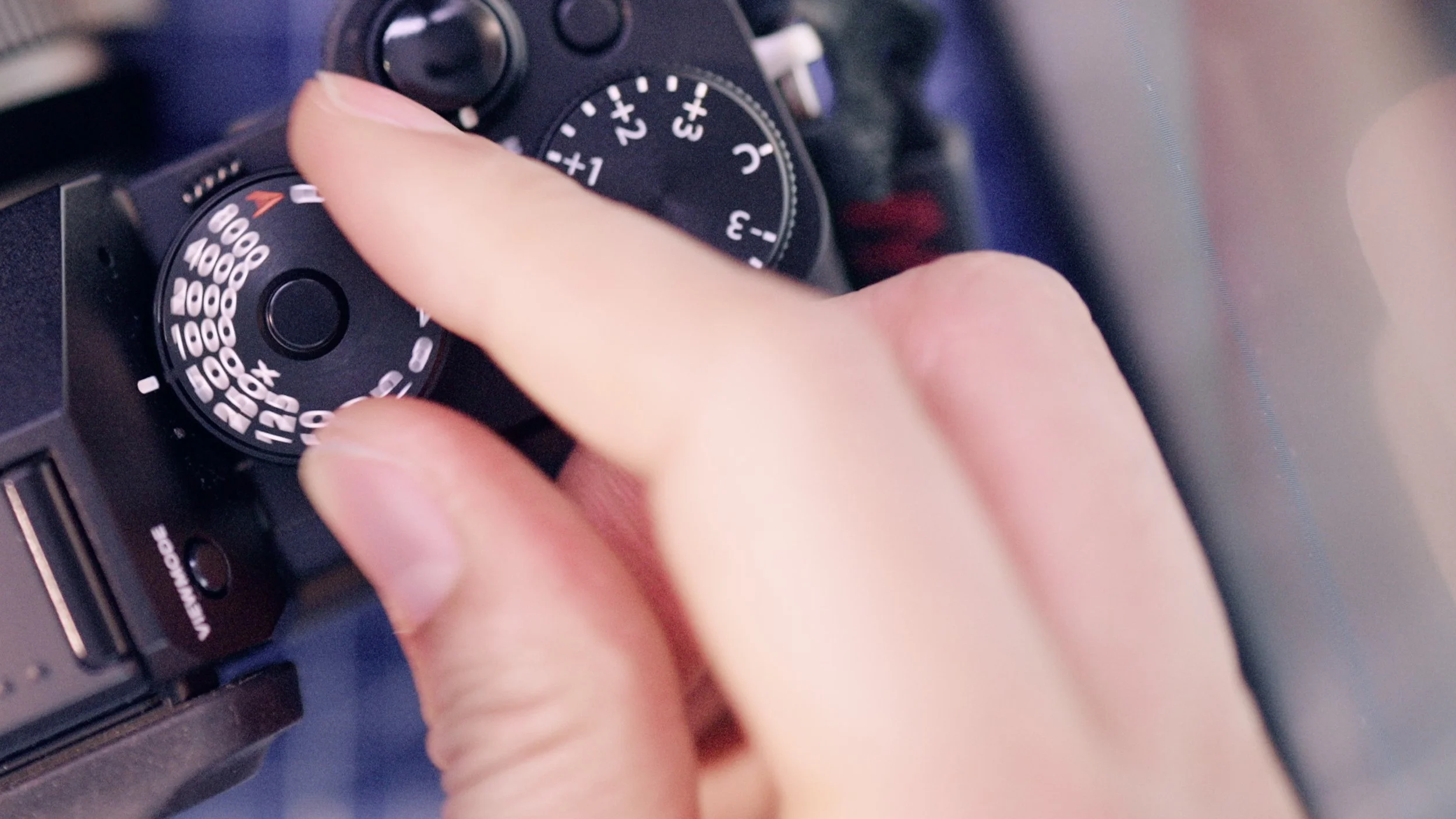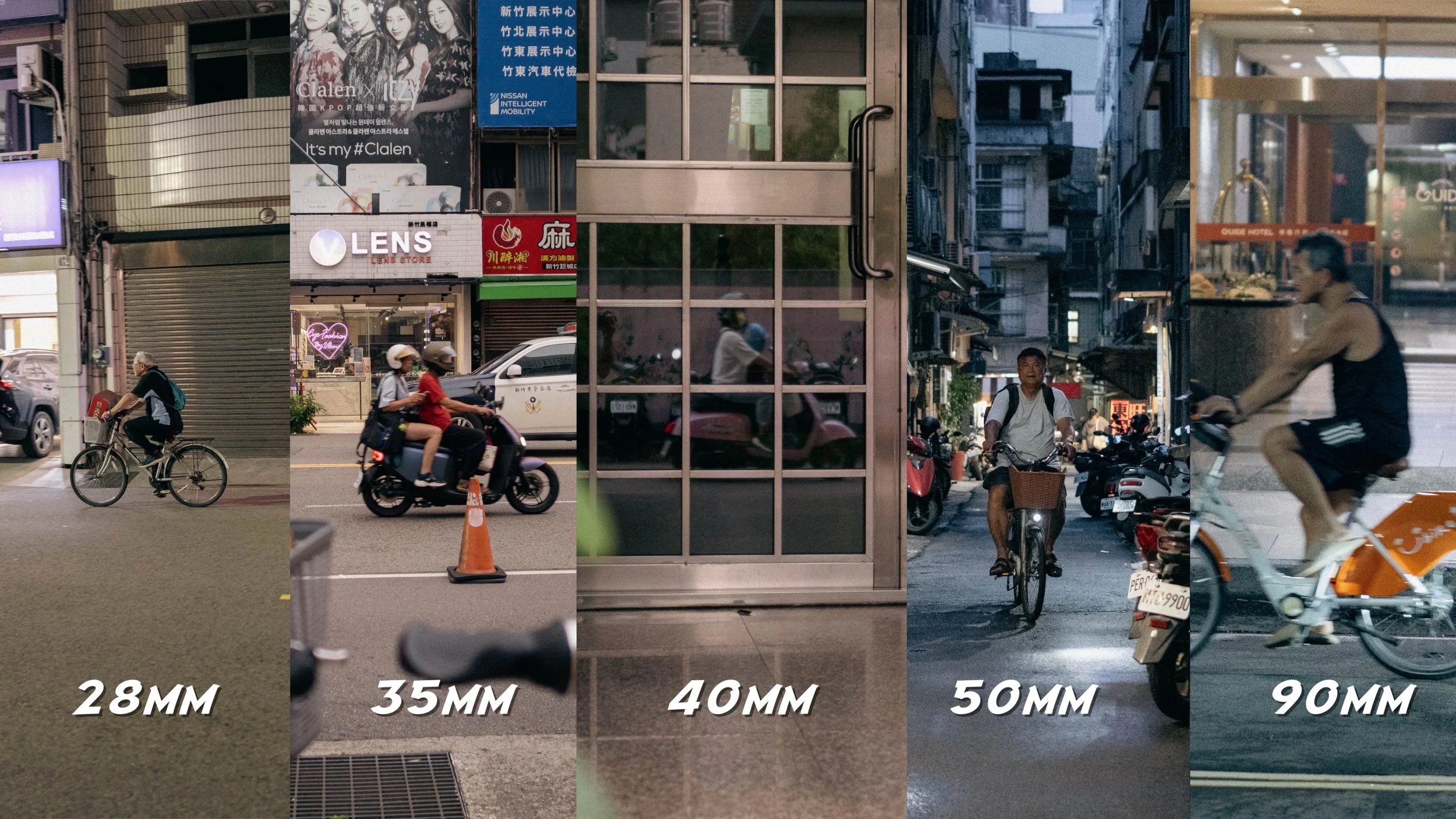I Obsessed over 1 Prime Lens for Travel?
Just one prime lens for travel sounds good in theory, what if you don’t know what to shoot or where you’re going?
I forced myself to use a different focal length everyday, 5 primes for a 6-day trip, but which lens do I pick when I’m tired, a little homesick? Ironically Taiwan is my hometown, yet I haven’t been back for fifteen years, and getting lost on the streets with the OM3 and my other new camera will be how I get reacquainted with it.
Day 1
Though I normally like to shoot wide at the start of the trip, on day 1 I chose 40mm.
I’m just settling in, I want the foreign to start feeling familiar as soon as possible, and it doesn’t get much more comfortable than 40mm. I’m using the 20mm f1.4 pro on the OM3, the taller 4 by 3 micro four thirds sensor means there’s more vertical real estate: a 40mm is versatile.
If you want to go wide, it can look wide without a hint of distortion around the edges, there’s enough compression if you get close, the f1.4 aperture lets you create a shallow depth of field. This 20mm is sharp, but not overly so, I did drop down the clarity and contrast a bit in the edit, its feather bokeh and a bit of fringing in the highlights gives these images more character.
That character helps when using a 40mm in everyday scenes, which otherwise looks natural, maybe a little too comfortable. You might want your travel photos to stand out more.
All the sample images in this blog post were edited from RAW files using my free Chrome emulation preset. They work with most RAW files from different cameras as long as you use “Adobe Color” as the starting base.
Download it for free here.
Can a 40mm be your one prime lens for travel?
There’s an intimacy to this focal length that gets close but not too close, subjects are no more than an arm’s length away.
***
This is how I felt coming back to Taiwan 15 years later.
Work and kids have kept me away.
I’d forgotten what it means to be back in my hometown?
Motorbikes, street eats, the fading light.
Foreign and familiar all at once.
***
Day 2
28mm is perfect for establishing shots of the surrounding neighborhood while I start to find my bearings.
Even though 24mm is more common in your typical 24-70, 24-105 zoom range, I prefer 28mm as there’s less distortion. It does depend on the lens, as well as the lens maker, as to how much they fudge the actual field of view. The most famous example? The 28mm Summilux on the Leica Q series. That lens is closer to a 25, 26mm field of view - as soon you tilt the lens a little up or down, or place people near the outer third of the frame - things start to look warped.
My 28mm of choice on this trip is paired with my new camera and distortion is very well controlled. Perhaps the best I’ve seen on a 28 equivalent? You can get close to the subject, put them in the corners to exaggerate leading lines and still end up with a pleasing result.
The downside is that there’s not much separation with this focal length, even though this 28 equivalent is fast, but why go for a fast 28 when most 28 shooters zone focus? Autofocus on a fast 28 makes sense on the street, you can get closer and react more quickly to approaching subjects. Exaggerating shapes for more complex compositions.
Coordinated chaos is why you shoot 28mm, so could it be your one prime lens for travel?
I thought 28mm was too wide, too prone to distortion, but how fast and well corrected this particular 28mm was mounted on my new camera made it a pleasure to use.
If you’re visiting crowded urban cities in Taiwan, Japan, across south-east Asia, a 28mm would do just fine. You can easily fill the frame in cities that are old and new at the same time.
What about locations that are a bit more spread out, less populated?
That’s when you’d go for what I went for on:
Day 3
The classic 35mm - what I previously thought was the top contender for my 1 prime lens for travel.
I had such a great time shooting on 28mm the day before that I almost didn’t want to switch to 35mm on day 3, but the OM3 makes it easy. I used the 17mm f1.8 mark ii on the OM3, this lens is nice and sharp, well controlled for aberrations, weather resistant, but what it lacks in character it makes up for in size. A perfect almost pocketable setup that disappears on a neckstrap.
There’s not much difference between the 28mm and 35mm perspectives - a 28mm with the EVF up to your eye leaning forward is basically the same as a 35mm shooting from the hip leaning back, but a 35 is more selective.
You can choose what to leave out of the scene a little easier without moving your feet, and there’s also more opportunities for shallow depth of field. If bokeh matters to you this alone might make your choice over the 28, but I was surprised at how much separation I got on some of these shots with the OM 17mm 1.8. Micro four thirds lenses tend to have a closer minimum focusing distance than the full frame options I’m used to, so what you lack in background separation you gain in foreground layering.
I love 35mm, but its fiercest critics think it’s boring. Doesn’t exaggerate geometry, no dramatic portrait isolation. There’s nowhere to hide when you use a 35. The working distance makes it so that what you’re seeing is where I was standing, no tricks or visual gimmicks.
I was walking around a new (to me) shopping district. Everything was new, pristine, nothing you would immediately associate with classic street photography, that’s why this shot is my favourite from day 3.
I had to really work to find these leading lines slashing across the top and bottom of the frame, and on a 35 you can play faster and looser with subject placement. Even if they’re out in the periphery, the proportions still look right.
***
35mm’s perfect for documenting the little moments around me.
But this location isn’t what I remember from my childhood Taiwan memories.
The people might be the same, but the backdrop’s changed.
Or it might just be me?
***
Day 4
On day 4 I chose a 50mm (paired with my new travel camera), determined to track down locations that best match my fading childhood memories.
You can get a fast nifty fifty for most systems that’s still small, for not much money, and you have more creative options for subject isolation. This fifty’s new to me, but it reminds me of an old familiar 50, either way this field of view is too often mislabelled as “just for portraits”.
It’s much closer to a general purpose street and travel lens, sure it’s harder to zone focus a 50 than a 28 or 35, it’s not too tight. Your choice of subject might need to be across the road rather than oncoming traffic, but it’s still plenty wide for most travel scenes.
Even in the compressed chaos of the Taiwanese night markets, the smoke, puddles, pools of light glistening across the back alleys, all pair beautifully with the 50 mm perspective. Still enough room for leading lines, plenty of foreground elements to blur out if necessary, I rarely felt feel like I needed something wider.
Can a 50mm be your only prime lens for travel?
I find I don’t have to work that hard, the proportions always look right on a 50mm. I can get away with a basic central placement of the subject, no fancy spirals or grids necessary, though I do need to pick the right subject. Then it’s a game of sit and wait, letting the environment revolve around them. That’s why this frame is my favourite from day 4 on the 50.
Faded reds, vibrant blues and yellows, motorbikes everywhere, and at the centre of it all - a bemused businessman waiting to clock off for the day. A throwback look, just like the results coming from this new to me fifty. Sharp, contrasty, handles flare really nicely, but there’s a bit of that glow to give these retro scenes an extra bit of flavor.
***
Nostalgia was the overwhelming feeling as I closes out Day 4.
All around me was iconography taken straight from my memories.
It was a homecoming, in more ways than one.
Because my new camera’s not new - just new to me.
***
For me digital photography all started with Fuji, and before this trip I finally picked up a used XT5. It’s not as compact as my OM3, doesn’t have the autofocus accuracy or the full frame look of my Nikon Zf.
Why did I add Fuji back to my kit, and which Fuji lenses did I pick?
Day 5
The last prime - and focal length - I brought on this trip:
Specifically the 45mm f1.2 Pro on my OM3, slightly tighter than the 85mm I’m used to. It’s big for a micro four thirds lens, but very compact compared to a full frame 85. I didn’t choose it for its bright f1.2 aperture though, this is the only weathersealed telephoto prime to my knowledge available for micro four thirds.
Taiwan in Summer is stifling hot, the humidity seeps into every pore and crevice. every piece of gear I brought on this trip had to be weather sealed. I’d love a weather sealed version of the 45mm f1.8 or f1.4 from OM system (if you’re listening).
Rather than focus on whatever the full frame equivalent of the f1.2 depth of field on micro four thirds, I used this 90mm equivalent for subframing. Store fronts at night, street lights and signs.
Can a 85mm or 90mm be your only prime lens for travel?
Probably not, this is the only focal length I brought on the trip that I’m saying this about, every other focal length 28, 35, 40, 50 - I can make work as my only lens, but a 85 or 90 could be a great visual palette cleanser for vistas in the distance.
All the sample images in this blog post were edited from RAW files using my free Chrome emulation preset. They work with most RAW files from different cameras as long as you use “Adobe Color” as the starting base.
Download it for free here.
It’s a great companion to any of these other lenses - short telephoto that’s tight but not too much so.
But with 1 day left on this trip - tired and homesick - which lens and focal length did I pick?
It comes back to why I picked up a used XT5 - given the price increase it might be the last Fuji camera I buy?
The last time I bought anything from Fuji was 7 years ago with my XT3, I’ve since moved on to the Nikon Zf and now the OM3, but the lens I chose on the last day of this trip is what pulled me back.
The quality of Fuji’s new generation of lenses - as you’ve already seen on the 50mm equilvalent - the 33mm f1.4 is undeniable. Crazy sharp, a little clinical to some, but at night with the extra grain from that 40 megapixel Fuji sensor the character comes out.
But on my final night of this trip I chose the 18mm f1.4, it might be the best Fuji lens I’ve ever used?
***
But how good the lens is, is less important than perspective.
Less than a week after coming back, even after years away.
That strange distant feeling had faded.
Turns out my hometown’s a street photography haven
I never knew it growing up?
I rediscovered my beginnings through 28mm.
I no longer had to keep things an arm’s length away.
The close quarters shooting experience now felt like second nature.
***
Just like those all too familiar top dials, film sims, even the quirky autofocus. The XT5 is a great camera - not as good as the Zf, and in many ways the OM3 is better, but lenses are what brought me back to Fuji.
There’s nothing like this 18mm in Nikon Z mount, though it does remind me a bit of the 28mm 1.8 G in F-mount, and I’m hoping the next Nikon Z lens pulls another play from Fuji’s playbook, for a 28mm 1.8 S?
Happy shooting everyone, talk soon.
Jack.
This blog and post is sponsor-free. If you’d like to support my work please consider purchasing gear through my affiliate links. To make this post and the associated video this is the gear I used:
OM 17mm 1.8 ii: https://geni.us/dKGUpZ
OM 45mm f1.2 Pro: https://geni.us/g7sDe
Fujifilm XT5: https://geni.us/s5dHe
Fujifilm 33mm f1.4 R WR: https://geni.us/xDUQ5p
Fujifilm 18mm f1.4 R WR: https://geni.us/WPLEZww
Wotancraft Pilot Backpack: https://geni.us/AEqv
Wotancraft Pilot Sling 7L: https://geni.us/eU8Lj

